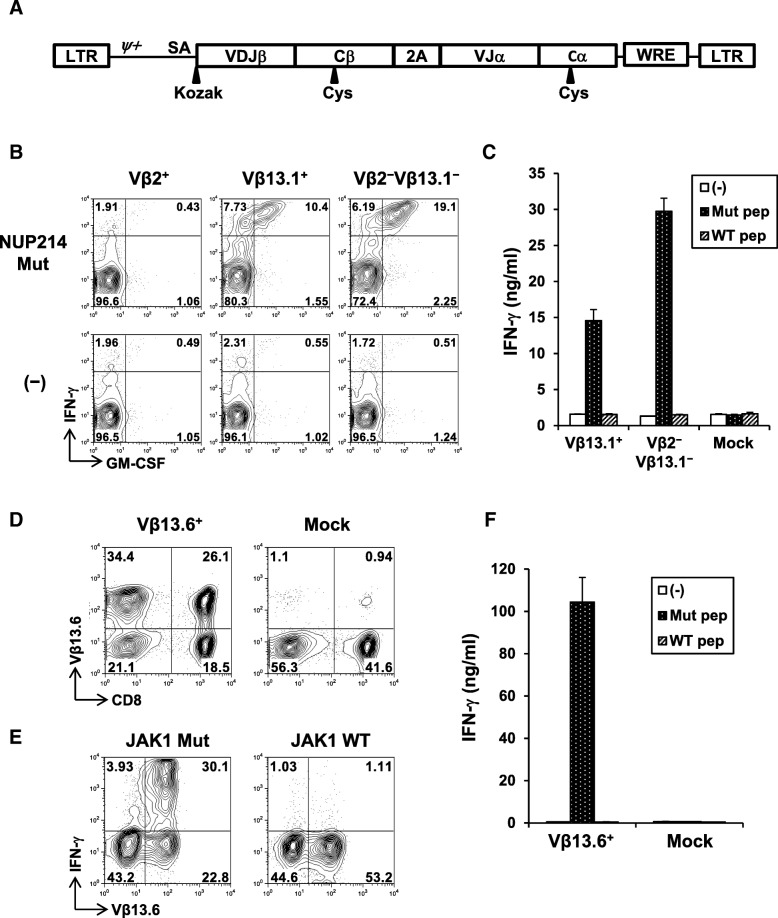Fig. 5.
Generation of neoantigen-specific CD4+ T-cells by TCR gene-engineering. a Schematic representation of retroviral TCR expression vector for TCR gene-engineering. LTR: long terminal repeats; ψ+: extended packaging signal; SA: Splice acceptor site from the first exon-intron junction of human elongation factor-1α; Kozak: Kozak consensus sequence (GCCACC); VDJβ: TCR β chain variable-diverse-joining regions; Cβ: TCR β chain constant region containing a Cystein modification; 2A: the P2A translational skipping sequence; VJα: TCR α chain variable-joining regions; Cα: TCR α chain constant region containing a Cystein modification; and WRE indicates the: Woodchuck hepatitis virus posttranscriptional regulatory element. b-c T-cell function of NUP214-specific TCR-transduced T-cells. b IFN-γ and GM-CSF production from Vβ2+, Vβ13.1+, or Vβ2−Vβ13.1− TCR-transduced T-cells against autologous EBV-B cells pulsed with or without NUP214 mutated peptide. c IFN-γ production from Vβ13.1+ or Vβ2−Vβ13.1− TCR transduced T-cells against NUP214 mutated or wild-type peptide was measured by ELISA. Mock: TCR-untransduced T-cells. d-f Transduction efficiency and function of JAK1 neoepitope-specific TCR-transduced T-cells. d Vβ13.6+ TCR transduction efficiency was examined by flow cytometry. e Detection of JAK1 neoepitope-specific response on Vβ13.6+ T-cells by intracellular cytokine staining. f Reactivity of TCR-transduced T-cells against JAK1 mutated or wild-type peptide was tested by ELISA

